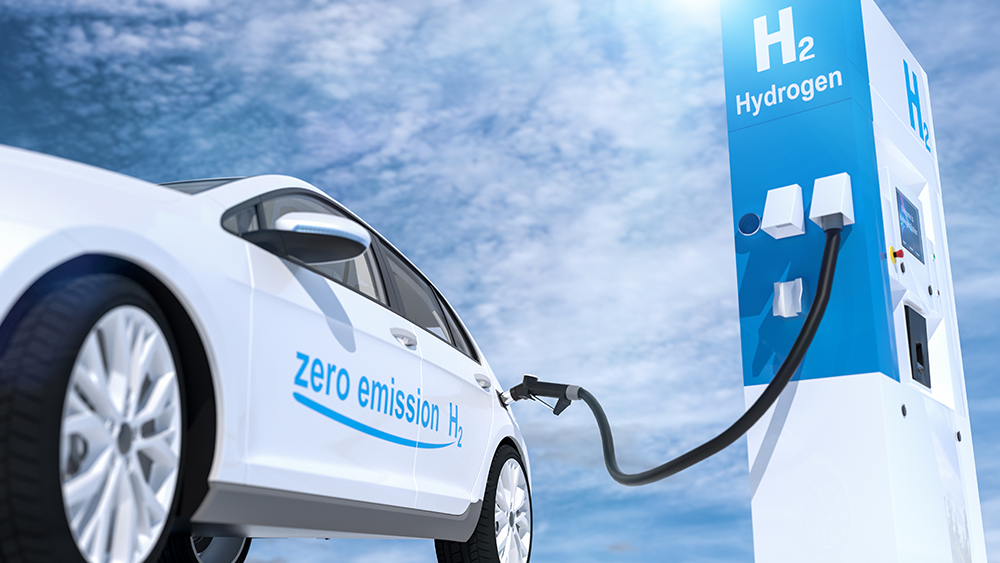Hydrogen seems to be becoming part of the green mission to decarbonise by 2050. Here we shine a light on where they fit in, and how they’re different to electric vehicles and the green gas that will be piped into our homes.
What exactly are hydrogen vehicles?
Hydrogen vehicles use hydrogen gas in a fuel cell, where it gets mixed with oxygen to produce electricity that the vehicle can run off. They’re officially called fuel cell electric vehicles (FCEVs). Instead of charging, you have to top these vehicles up with hydrogen, and while any type of hydrogen can be used to run FCEVs, green hydrogen is the preference.
How is that different from an electric vehicle?
An electric vehicle (EV) draws electricity straight from a battery. That means with EVs you have to charge the battery, which can take a while and these vehicles don’t go extremely far. Hydrogen-based FCEVs on the other hand require filling up the gas tank, which is relatively quick (10-15 minutes). Hydrogen fueled vehicles have a much bigger range, so can travel a lot further.
So, does that mean hydrogen vehicles are going to replace electric vehicles?
No, far from it. Electric vehicles will likely still be a dominant form of green transportation in the near future, as we have much of the infrastructure already set in place to charge them.
Making hydrogen gas easily available is going to require investment and infrastructure, with hydrogen gas stations needing to be set up around the country.
Where around the world are hydrogen cars already used?
Japan is by far leading in this space, with 4,000 cars already on the road (10% of their government target). California owns around 11,000, but they have far fewer fuelling stations than Japan. Germany has almost 100 hydrogen stations built along their motorways, and the Netherlands are on their way with 500 FCEVs, and 41 buses which are planned to increase.
How can hydrogen help the big forms of transport like commercial vehicles?
Here is where the green gold is. Where hydrogen-powered transport is going to have its biggest impact is in commercial vehicles, trucks, boats, ferries and planes. These big movers and heavy industries (like steel and cement) are really hard to replace with electricity, yet they’re the ones producing the biggest carbon emissions.
Hydrogen is the big-vehicle solution. It’s light to transport, goes similar distance to a diesel vehicle, and best of all, it’s gloriously green.
Where are hydrogen-powered commercial vehicles already being used?
New Zealand will be one of the first three countries (along with Korea, Switzerland and soon Australia) to implement hydrogen vehicles for commercial use.
New Zealand already has plans for four green hydrogen fuelling stations in the North Island by the end of 2022. Taranaki-based Hiringa Energy is investing $50 million in stations in Auckland, Tauranga, Hamilton and Palmerston North (integrated into existing Waitomo sites), and is starting its roll out of 20 hydrogen powered trucks, coming from US company Hyzon Motors.
Hiringa Energy plans to build its own hydrogen plant, which will harness wind power to separate hydrogen from water, and then distribute the stored hydrogen to stations.
They plan to expand to the South Island through 2023, followed by 24 stations across the country in the next four to five years.
Ports of Auckland has independently discovered the huge advantage hydrogen has over electricity for the type of equipment they operate and their long ranges. What excites them the most is the prospect of making hydrogen on site themselves. Rather than waiting for stations, they’ve already set up their own electrolyser on site producing up to 450 kg of hydrogen per day. As part of its Hydrogen Demonstration Project, Ports of Auckland is providing the hydrogen to run Auckland Transport’s first hydrogen bus.
What about hydrogen for powering boats and planes?
These get even more exciting. The new prototype of Emirate’s Team New Zealand’s America’s Cup boat introduces a hydrogen power train to boating, one of the first in the world.
Norway has two fuel cell modules ready to use for their world-first liquid hydrogen powered ferries later this year, planned to take 300 passengers and 80 cars. They also have 14 hydrogen-powered cruise ships planned for 2024/25.
Australia’s Aviation H2 is seeking investors to become Australia's first hydrogen-fuelled aviation company. And Australia’s AMSL Aero is designing an emissions free air taxi. With heavy batteries being a barrier to electrifying long haul flights, their hydrogen option will be able to travel 1000km for the same weight as the electric version covering 250km. They’ll be in the skies in the next five to ten years.
So how is hydrogen transport relevant to hydrogen in our homes?
It’s part of the bigger picture of going green by 2050. It helps us understand how to achieve the best mix of a range of climate change solutions; hydrogen fuel cells, and renewable gases alongside electricity.
As there are areas, such as heavy transport, where hydrogen is the ultimate energy, a lot of investment is going into this area. This will go hand in hand with the new green gases that will over time replace natural gas, into our homes through pipes.
Will the hydrogen for transport be the same as for our homes?
The gas will be the same, but how it will be stored and supplied for home versus transport use will be very different. One will go through the network pipelines, whilst the other will sit in tanks in hydrogen-gas stations for refueling. You won’t be able to plug in a hydrogen car at home for example, as it’s a whole different fuel storage system that needs to be set up at a station.
To read how green gases will affect our home living and what live projects are already on the go, check out our other spotlight articles.